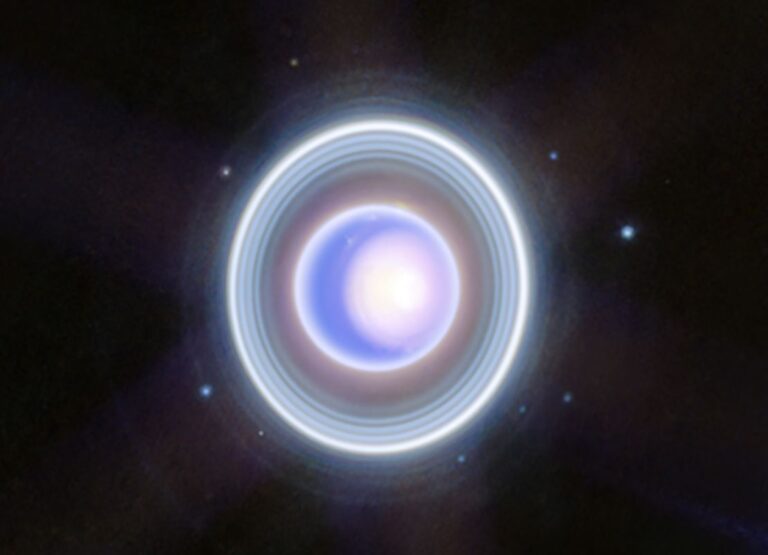NASA even managed to acquire some images of the planet’s 27 moons.
The most potent observatory ever put into orbit, the James Webb Space Telescope of NASA, has taken a stunning wide-field picture of Uranus using its near-infrared camera (NIRCam). It revealed the planet’s inner and outer rings, seasonal north polar cap, and even a few of its moons.
The image that Webb took this week is even more detailed than the one that he took in April, which at the time was the best view of Uranus that we had seen since NASA’s Voyager 2 passed by in the mid-1980s. Although there was a noticeable difference in definition between the two images, this week’s representation of Uranus is not that different from the previous one, but it still lets us see a lot of exciting features.
The most timely of these is the seasonal north polar cloud cap of Uranus, which is more visible than ever in the image above. NASA notes that a number of bright storms hover near and below the polar cap’s southern border, raising questions about how the polar cap itself—as well as these storms—might fluctuate as Uranus approaches solstice. The ice giant will reach solstice in 2028, giving astronomers plenty of time to monitor related seasonal and meteorological phenomena.

Many of Uranus’ moons are visible in this week’s image compared to the one shared in April. Webb’s image includes Ariel, Miranda, Titania, and Umbriel, four of Uranus’ biggest and brightest moons. The image from earlier this year was not quite sharp enough to include any of the ice giant’s 27 moons. However, this new perspective allows us to see Belinda, Bianca, Cressida, Desdemona, Juliet, Perdita, Portia, Puck, and Rosalind—small, dim moons that orbit closer to Uranus itself and are historically difficult to see.
The planet’s collection of icy rings, however, is one of its most notable features. While we had a decent look at them in April, Zeta, Uranus’ faint and diffuse innermost ring, is now visible to us. The planet’s outer rings are also vibrant, providing us with what NASA refers to as a “exquisite” view of the ice giant’s iconic silhouette.
Beyond being a stunning picture, Webb’s work will help NASA get ready for future expeditions to Uranus because of its unparalleled detail. NASA also claims that Uranus can be used as a stand-in for approximately 2,000 exoplanets since it provides information on meteorology and planet formation.

